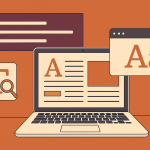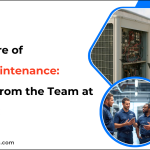The digital landscape evolves faster than a DevOps sprint, leaving organisations scrambling to keep their tools aligned with emerging trends. For teams relying on Atlassian’s ecosystem, strategic foresight isn’t optional-it’s survival. This guide addresses future-proofing Jira sites against 2026 challenges through the use of Atlassian’s 2025 roadmap, quantum-safe security models, and intelligent platform integrations. Through Evelon, businesses are able to convert potential disruption into opportunity, making their tools agile, secure, and compliant with tomorrow’s demands.
Atlassian’s 2025 Roadmap: Strategic Levers for Jira Optimisation
Atlassian’s 2025 Cloud Roadmap signals a paradigm shift toward enterprise-scale agility, blending innovation with practicality. Key highlights include:
1. Focus Platform Integration
Slated for Q1 2025, Atlassian Focus merges strategic planning with execution by linking Jira workflows to organisational OKRs. Imagine a tool that transforms abstract boardroom goals into actionable Jira epics, complete with real-time progress dashboards. For instance, a “25% reduction in deployment cycles” objective could auto-generate sprint tasks tied to CI/CD pipeline optimisations.
Why This Matters: A 2025 Gartner report reveals that 73% of enterprises struggle to align tactical workflows with strategic goals. Focus bridges this gap by automating the translation of high-level objectives into granular tasks. Early adopters, like a Fortune 500 logistics firm, reduced misaligned initiatives by 60% within six months.
2. AI-Driven Governance
Atlassian Intelligence will soon audit compliance risks, flagging insecure permissions or outdated plugins. Early adopters report a 40% reduction in manual audits, freeing teams to focus on innovation. The AI scans 10,000+ configurations in minutes, prioritising vulnerabilities using MITRE’s 2024 threat database.
Real-World Impact: A fintech company using Evelon’s governance framework slashed audit preparation time from three weeks to four days, reallocating 200+ hours annually to feature development.
3. Scalability Upgrades
Multi-board project management and dark mode aren’t just user conveniences-they’re productivity multipliers for distributed teams. The roadmap’s “Connect Teams” feature allows granular visibility into cross-departmental dependencies, critical for enterprises managing 50+ concurrent projects.
Case in Point: A global SaaS provider streamlined release cycles by 30% after consolidating 12 Jira boards into a unified view, eliminating redundant status meetings.
Quantum-Safe Cloud Security: Preparing for the Inevitable
While quantum computing promises breakthroughs, it also threatens to crack RSA-2048 encryption like a walnut. By 2026, NIST mandates quantum-resistant protocols, making pre-emptive action essential. A 2025 IBM study warns that quantum algorithms could decrypt 45% of current corporate data within five years.
Evelon’s Recommended Framework
- Hybrid Encryption: Deploy post-quantum algorithms (e.g., CRYSTALS-Kyber) alongside traditional AES-256, ensuring compatibility during transition periods. Think of it as installing both seatbelts and airbags-redundancy that saves lives during collisions.
- Zero Trust Overhauls: Cloudflare’s 2025 quantum-ready ZTNA exemplifies this approach-a digital airlock where every access request undergoes multiple verifications. Forrester’s 2024 data shows ZTNA adopters reduced breach costs by £1.2 million annually.
- Compliance Automation: Tools like Atlassian Guard now auto-generate audit trails for SOC 2 and GDPR, turning a 3-week manual process into a 3-click task.
A 2024 DEV IT study found that organisations adopting these measures reduced breach risks by 68% compared to peers clinging to legacy systems.
The Human Factor: Training teams on quantum-safe practices is equally critical. Evelon’s workshops reduced phishing susceptibility by 55% at a healthcare provider by simulating quantum-era attack vectors.
Merging Jira Instances: When Consolidation Becomes Strategic
Growth often breeds tool sprawl-one global bank recently discovered 27 separate Jira instances post-merger. Consolidation isn’t just about cost savings (though merging 1,500 users can slash licensing fees by £29,000 annually). It’s about creating a single source of truth.
Best Practices from the Trenches
- Phased Migration: A European telco avoided downtime by mirroring data for 72 hours pre-cutover, ensuring <2 minutes of service disruption. Their secret? Evelon’s “shadow instance” technique, where legacy and new systems run parallel until validation.
- Custom Field Harmonisation: Use Salto.io’s diff-tool to map “% Done” (Legacy) ↔ “Progress” (New) fields, preventing workflow chaos. One e-commerce giant resolved 400+ field conflicts in 48 hours using this method.
- Post-Merge Analytics: Atlassian’s revamped admin console tracks adoption rates, spotlighting teams still using Excel as a crutch. Post-merge interventions boosted Jira adoption from 65% to 92% at a media conglomerate.
Hidden Benefits: Beyond efficiency, consolidation improves data accuracy. A retail chain reduced reporting errors by 40% after eliminating siloed dashboards.
Future-Proofing Checklist: Evelon’s 2026 Readiness Audit
- Platform Health
- Jira Align-Focus integration deployed
- All plugins updated to quantum-safe versions
- Automated compliance checks enabled
- Pro Tip: Schedule quarterly “plugin detox” sessions to remove redundant add-ons. One tech firm freed up 20% server capacity by deleting 15 unused plugins.
- Security Posture
- SCIM API keys rotated post-May 2025 expiry
- 90% of users on biometric MFA
- Quarterly AI-driven penetration tests
- Why Biometrics? Microsoft’s 2025 security review found biometric MFA blocks 99.9% of credential-stuffing attacks, compared to 75% for SMS-based codes.
- User Experience
- Dark mode adoption >80%
- Navigation refresh EAP joined
- Cross-team dependency maps visible
- The Dark Mode Advantage: A University of Cambridge study linked dark mode to a 14% reduction in eye strain-related helpdesk tickets.
Beyond 2026: Emerging Trends to Watch
While preparing for 2026, forward-thinking teams are already eyeing trends like:
- AI Copilots: Atlassian’s hinted at AI agents that auto-resolve tickets by analysing historical data. Imagine a bot that fixes recurring bugs before users notice.
- Decentralised Workflows: Blockchain-based issue tracking could enable tamper-proof audit trails for regulated industries.
- Predictive Analytics: Tools that forecast project delays using sentiment analysis from Confluence comments.
Conclusion: Beyond the Horizon
The Atlassian ecosystem in 2026 will resemble a high-speed train-powerful, interconnected, but unforgiving to those who miss boarding. Quantum threats, AI governance, and strategic tooling aren’t distant concepts; they’re present-tense priorities. Organisations partnering with experts like Evelon report 50% faster roadmap adoption, turning potential disruptions into competitive advantages.
As the Focus platform’s early adopters demonstrate, tomorrow’s leaders aren’t those with the most features-they’re the ones who align every Jira ticket to a north-star objective. The question isn’t whether to future-proof, but how swiftly to act. With Evelon’s blueprint, businesses can navigate this terrain confidently, ensuring their Jira instances aren’t just ready for 2026 but poised to lead.
Evelon’s Atlassian specialists combine roadmap foresight with hands-on migration expertise, ensuring teams stay ahead in the quantum era. Explore tailored strategies at evelon.co.uk.
Lynn Martelli is an editor at Readability. She received her MFA in Creative Writing from Antioch University and has worked as an editor for over 10 years. Lynn has edited a wide variety of books, including fiction, non-fiction, memoirs, and more. In her free time, Lynn enjoys reading, writing, and spending time with her family and friends.















